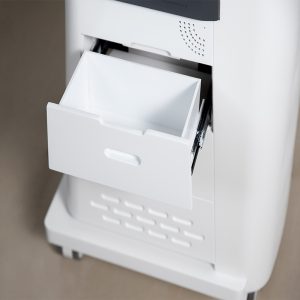Cleaning and Disinfection of Mechanical Ventilators: Ensuring Patient Safety

With this motto in mind, we have turn out to be amongst probably the most technologically innovative, cost-efficient, and price-competitive manufacturers for cleaning and disinfection of mechanical ventilators.
Introduction:
In healthcare settings, mechanical ventilators play a crucial role in providing life-saving support to patients with respiratory illnesses. However, these devices can also become a breeding ground for harmful bacteria and viruses if not properly cleaned and disinfected. This article aims to highlight the significance of regular cleaning and disinfection of mechanical ventilators to ensure patient safety and prevent the spread of infectious diseases.
Importance of Cleaning and Disinfection:
Mechanical ventilators come into direct contact with a patient's respiratory system, providing oxygen and removing carbon dioxide. This constant exposure makes them susceptible to contamination by microorganisms, including bacteria, viruses, and fungi. Failure to clean and disinfect these devices can lead to healthcare-associated infections, compromising patient safety and recovery.
Key Steps for Cleaning and Disinfection:
At our firm with good quality initially as our motto, we manufacture merchandise that are entirely made in Japan, from materials procurement to processing. This enables them for being used with confident peace of mind.
1. Preparation: Before starting the cleaning process, ensure that all necessary tools, cleaning agents, and personal protective equipment (PPE) are readily available. This includes gloves, goggles, masks, and disposable cleaning wipes or solutions.
2. Disconnect and Disassemble: Carefully disconnect the ventilator from the patient and remove any removable parts, such as filters, tubes, and humidification chambers. Follow manufacturer guidelines for disassembling the device for thorough cleaning.
3. Cleaning: Clean all surfaces and parts with a suitable cleaning agent or disinfectant. Use disposable wipes or brushes to reach intricate areas. Pay special attention to high-touch surfaces, such as control knobs, buttons, and display screens. Rinse with clean water to remove any residue.
4. Disinfection: After cleaning, apply an appropriate disinfectant solution to all surfaces, ensuring complete coverage. Allow the disinfectant to remain on the surfaces for the recommended contact time specified by the manufacturer. This step eliminates any remaining microorganisms and reduces the risk of contamination.
5. Drying and Reassembly: Thoroughly dry all components using lint-free cloths or air-drying techniques. Ensure that all parts are completely dry before reassembling the ventilator. Follow manufacturer guidelines and recommendations for proper reassembly to maintain functionality.
6. Storage and Maintenance: After cleaning and disinfection, store the ventilator in a clean and dry environment. Regularly inspect the device for any signs of damage or wear and schedule routine maintenance as per manufacturer instructions.
Best Practices:
- Develop a comprehensive cleaning and disinfection protocol specific to your healthcare facility, considering guidelines from regulatory bodies and manufacturer recommendations.
- Train healthcare personnel on proper cleaning techniques, including the appropriate use of cleaning agents and PPE.
- Maintain a logbook or digital system to track cleaning and disinfection activities, ensuring accountability and adherence to the prescribed schedule.
- Regularly review and update cleaning protocols based on new research, emerging pathogens, or changes in device design.
- Collaborate with infection prevention and control teams to stay informed about the latest guidelines and best practices in ventilator cleaning and disinfection.
Conclusion:
Cleaning and disinfection of mechanical ventilators are essential steps in ensuring patient safety and reducing the risk of healthcare-associated infections. By following proper cleaning protocols and best practices, healthcare facilities can maintain a clean and safe environment for patients receiving respiratory support. Regular training, compliance with established guidelines, and collaboration with infection prevention teams will contribute to the effective management of mechanical ventilators, ultimately saving lives and improving patient outcomes.
We also provide OEM service that caters to your specific needs and requirements. With a strong team of experienced engineers in hose design and development, we value every opportunity to provide best products and solutions for our customers.